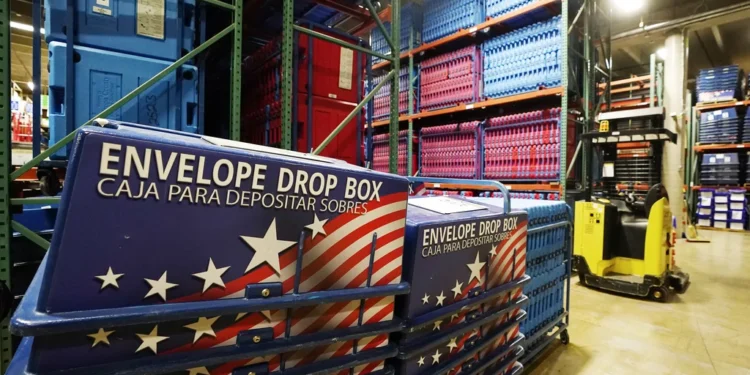Early voting is poised to get underway in several states this month. The Washington Examiner will take a closer look at the swing states, including voting rules you need to know and key differences from prior elections. Part one of Battleground Ballots will focus on what has changed in Arizona, the epicenter of election integrity battles in the 2020 and 2022 elections.
At the heart of former President Donald Trump’s claims that the 2020 election was stolen was Maricopa County, Arizona.
The county and the crucial battleground state itself have since become the epicenter of election integrity lawsuits and lingering scrutiny from Republicans, including Senate candidate Kari Lake, who has not conceded her 2022 loss in Arizona’s governor’s race.
Now, in 2024, a recent ruling by the Supreme Court delivered the Republican National Committee a small victory when it ruled that Arizona officials must reject state voter registration forms that are submitted without an applicant’s proof of U.S. citizenship.
The ruling effectively means that tens of thousands of Arizona voters will be registered only for federal elections in 2024 until they can prove their citizenship. But Arizona counties are also making changes to ballot systems and encouraging early voting, which starts almost a month ahead of the general election, that could affect voters when they cast their ballots in federal, state, and local elections on Nov. 5.
Here’s what you should know about Arizona‘s election integrity battles and voting rules ahead of November:
1. Legal hurdles
Several legal cases over the state’s voting system are currently playing out that could have ramifications in races up and down the ballot for this November and beyond.
In a partial win for a Republican-led lawsuit under a 2022 Arizona voting law, the Supreme Court in August said the state can enforce proof of U.S. citizenship registration requirements for state and local races while an appeals process plays out. But the justices ruled the I.D. requirement would be redundant for federal races, such as for Congress and the presidency.
The ruling was a small loss for the GOP effort, as it meant around 41,000 Arizonans will still be allowed to cast ballots in the presidential race but not local and state contests, which has the potential to sway the election outcome in a state where President Joe Biden beat Trump by less than 11,000 votes.
Arizona-based GOP strategist Barrett Marson said the decision effectively upheld the status quo.
Two other GOP-led election lawsuits also take aim at the state.
Arizona Republican Party Chair Gina Swoboda has asked the state Supreme Court to overturn executive orders from Gov. Katie Hobbs (D-AZ) over allegations that she overstepped her authorities. Hobbs’ office has called the lawsuit “frivolous.”
Hobbs made state buildings available as voting sites or ballot drop-off locations, including the Department of Juvenile Corrections and the Department of Corrections, Rehabilitation and Reentry.
In a separate Republican-led case, Arizona Secretary of State Adrian Fontes, a Democrat, wants the suit that seeks to purge at least 500,000 voters from its rolls to be dismissed. The Arizona Free Enterprise Club and Swoboda allege the state’s voter rolls are rife with deceased and former Arizona residents, thereby violating the National Voter Registration Act.
The Democratic Party’s campaign arm for state legislatures accused Republicans of deploying a tactic in battleground states “designed to deny access to the ballot box while sowing fear and mistrust in our election system.”
Fontes criticized claims by Republicans of past widespread voter fraud and suggestions that this year’s elections could suffer the same non-existent fate.
“It reminds me of the old Wendy’s commercial. Where’s the beef?” Fontes told the Washington Examiner in August at the Democratic National Convention. “We’ve never seen any evidence of any widespread fraud. We’ve never seen any evidence of any issues with our elections. In fact, Arizona is one of the easiest places to vote, and those systems were, frankly, years ago, set up by Republicans, and we’re grateful for that.”
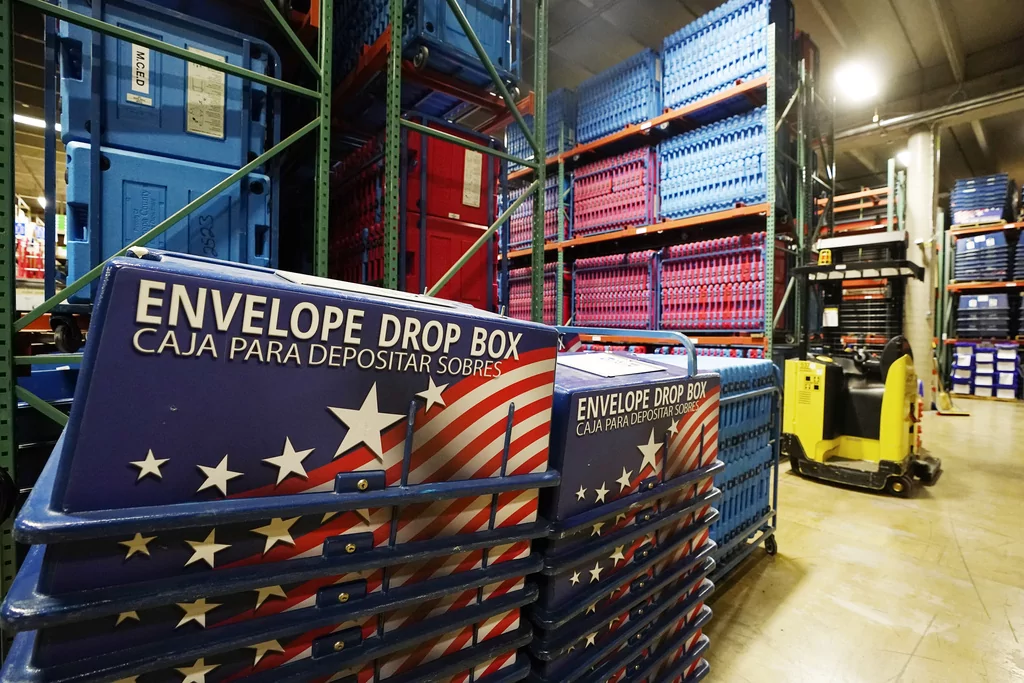 FILE – The warehouse at the Maricopa County Elections Department keeps all the equipment and signage for all the voting precincts in Phoenix, Sept. 8, 2022. Officials at Meta say they have found and disabled a network of thousands of fake Facebook accounts linked to China that were used to spread partisan content in the U.S. The accounts disclosed on Nov. 30, 2023, were designed to look like they were run by everyday Americans. (AP Photo/Ross D. Franklin, File)
FILE – The warehouse at the Maricopa County Elections Department keeps all the equipment and signage for all the voting precincts in Phoenix, Sept. 8, 2022. Officials at Meta say they have found and disabled a network of thousands of fake Facebook accounts linked to China that were used to spread partisan content in the U.S. The accounts disclosed on Nov. 30, 2023, were designed to look like they were run by everyday Americans. (AP Photo/Ross D. Franklin, File)
2. 2022 mistakes lead to change in Maricopa County
Maricopa County faced extreme scrutiny in the 2022 midterm elections after a problem with vote tabulators at about 20% of its polling locations. The county was already under a microscope and the subject of election integrity following the 2020 election, in which several Republicans made since-debunked claims it was stolen.
Adrian Borunda, public information officer for Maricopa County Elections, told the Washington Examiner that the county’s printers were operating at such a high level in 2022 that they were not printing the timing marks needed on the ballots to be tabulated. To prevent this from happening in 2024, the county got new printers and held a “mock election” to conduct a “stress test” of the printers.
Voters and county employees traveled to a vote center built into the elections division’s building, where the machines were tested to see how many print jobs could be done and ensure that ink was printing properly on the ballots. Ballots are also expected to be two pages, which is something Maricopa County hasn’t done for several elections.
“Part of that mock election vote center process that we did to test the printers specifically was to see how they could handle the increase in page printing they’ll have to do at vote centers in terms of early voting,” Borunda said. “I think we’ll be fine. It’s on Election Day, when we see a little bit more in-person voting, that we’ll probably see an increase in wait times at vote centers. But it’s something that we’re prepared for.”
New physical security measures are put in place to guarantee safe and secure elections in regard to protesters outside voting locations. For the primary, the county had about 2,500 temporary but full-time employees, and it is looking to raise the number to 3,000 for the general election. Borunda declined to go into detail about security plans with law enforcement, but he said polling workers’ safety is “paramount.”
Inside the ballot tabulation center, the county puts an “air gap” system in place that ensures there are no access points to the internet on any of the voting machines.
To increase public trust, Maricopa County’s elections division began conducting tours to let voters see how a tabulation center counts ballots. Borunda said numerous groups, from Turning Point USA to Mi Familia Vota, have done the tours and that the division has gotten “non-stop requests.”
Other counties are also changing their voting approach and interactions with the elections offices. Eileen Wilson, Pima County GOP vice chairwoman of fundraising, told the Washington Examiner that after the 2022 elections, she believes the recorder’s office and elections office are “more upfront” about letting parties inspect voting machines this cycle.
She also said the Pima County GOP is encouraging early voting — a method typically favored by Democrats that state Republicans want their voters to better utilize.
3. Who can vote?
Voter registration for Arizona’s general election ends on Oct. 7., 29 days before the Nov. 5 election.
To register to vote in Arizona, a person must be a U.S. citizen, a resident of Arizona at least 29 days prior to the election, 18 years of age or older, able to write their name or make their mark unless prevented by disability, and not be convicted of treason or a felony, or found mentally incapacitated by a court.
Under federal law, voters must swear they are U.S. citizens under penalty of perjury but they do not need to provide proof of citizenship to either vote in federal elections in person or cast ballots by mail.
Arizona has a two-track system for registering voters that uses two different forms, a state one and a federal one. The state system requires documentary proof when registering to vote in state and local elections. Any eligible voter who submitted the state’s registration form without proof of citizenship would be registered to vote only in federal elections.
4. Is mail-in and early voting available? When will votes be counted?
Arizona voters can vote early by mail, in person, and via drop box. Otherwise, voters can cast ballots in a drop box or at a vote center on Election Day. Early voting centers are open 27 days before Election Day, with drop boxes opening Oct. 9. For Arizonans serving overseas in the military, counties send out ballots 45 days before Election Day.
Ballots are processed by the county recorder each day through the 27 days leading up until Nov. 5. The ballots go through a signature verification process. Once verified, they’re separated from the envelope to become a secret ballot and head to a tabulation center to be counted.
State law prohibits results from being published until 8 p.m. on Election Day.
“Those results that we’re getting from those early voters, we won’t be able to publish, but they are the first results that go out on Election Day,” Borunda said.
In a large county like Maricopa, elections officials do on-site tabulation. Where some counties have ballots placed in a drop box and then carried to a tabulation center to be counted, Maricopa County does it “on the spot” in the county’s over 240 vote centers.
5. Who is on the ballot in Arizona?
In addition to Vice President Kamala Harris and former President Donald Trump being at the top of the ticket as their parties’ respective presidential nominees, other White House candidates include libertarian Chase Oliver, Green Party candidate Jill Stein, and write-in candidate Shiva Ayyadurai. Robert F. Kennedy Jr. withdrew from Arizona’s presidential race on Aug. 22 and will not appear on the ballot.
One of Arizona’s Senate seats is also on the ballot this cycle. Republican Kari Lake will face Rep. Ruben Gallego (D-AZ) to replace retiring Sen. Kyrsten Sinema (I-AZ). Other candidates for Senate include Green Party candidate Eduardo Quintana and write-in candidates Jannie Prosser, Christopher Beckett, David Bozic, and Benjamin Rodriguez, Steven Sanders.
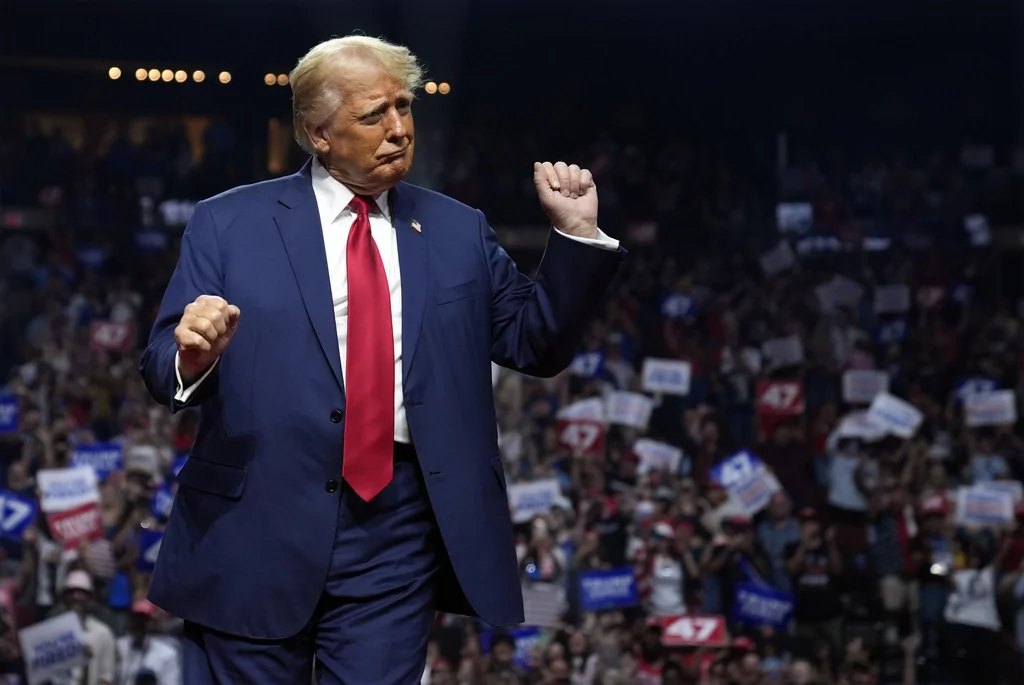 Republican presidential nominee former President Donald Trump dances at a campaign rally at the Desert Diamond Arena, Friday, Aug. 23, 2024, in Glendale, Ariz. (AP Photo/Evan Vucci)
Republican presidential nominee former President Donald Trump dances at a campaign rally at the Desert Diamond Arena, Friday, Aug. 23, 2024, in Glendale, Ariz. (AP Photo/Evan Vucci)
All nine congressional districts are also on the ballot. Notable races include the 1st Congressional District, 3rd Congressional District, and 6th Congressional District.
In the 1st District, incumbent Rep. David Schweirkert (R-AZ) will face Democrat Amish Shah, who defeated six candidates in the Democratic primary. With Gallego running for the Senate, Democrat Yassamin Ansari will face Republican Jeff Zink and Green Party candidate Alan Aversa.
In one of the tightest races for the House this year, incumbent Rep. Juan Ciscomani (R-AZ) will face a competitive general election and 2022 rematch against Democrat Kristen Engel. Green Party candidate Athena Eastwood will also be on the ballot.
6. Crucial counties
The infamous Maricopa County, the epicenter for GOP election lawsuits in 2020 and home to more than 60% of the state’s roughly 7.4 million population is a must-win territory for Democrats.
Encompassing Phoenix and surrounding areas, Biden’s roughly 2-point margin victory there undoubtedly helped him capture the state by just 0.3%. The county’s population is more than 4.5 million.
Other closely watched counties include Coconino, which borders Utah, and Pima, along the southern border that includes Tucson.
Another important county for Republicans, said Arizona GOP strategist Barrett Marson, is ruby-red YavaPai just north of Phoenix and home to Prescott.
“Trump and Lake are really going to have to run up the margins,” Marson said.
With a population a little more than 246,000, Marson said Trump and Lake will need around 70% of the vote in Yavapai County. In 2020, Trump captured 64% to Biden’s less than 35%.
7. Certifying the vote
The County Board of Supervisors across Arizona will review and verify the accuracy of election results in a certification process known as canvassing for each precinct or election district. Canvassing must occur in general elections between six and 20 days after the election.
On the fourth Monday following the election, the Arizona secretary of state will canvass the results of elections with candidates from federal, statewide, or legislative office, state appellate court and supreme court judges, and statewide ballot measures.
The candidates with the most votes are issued a certificate of election by the Board of Supervisors. Approved ballot measures will be declared law.
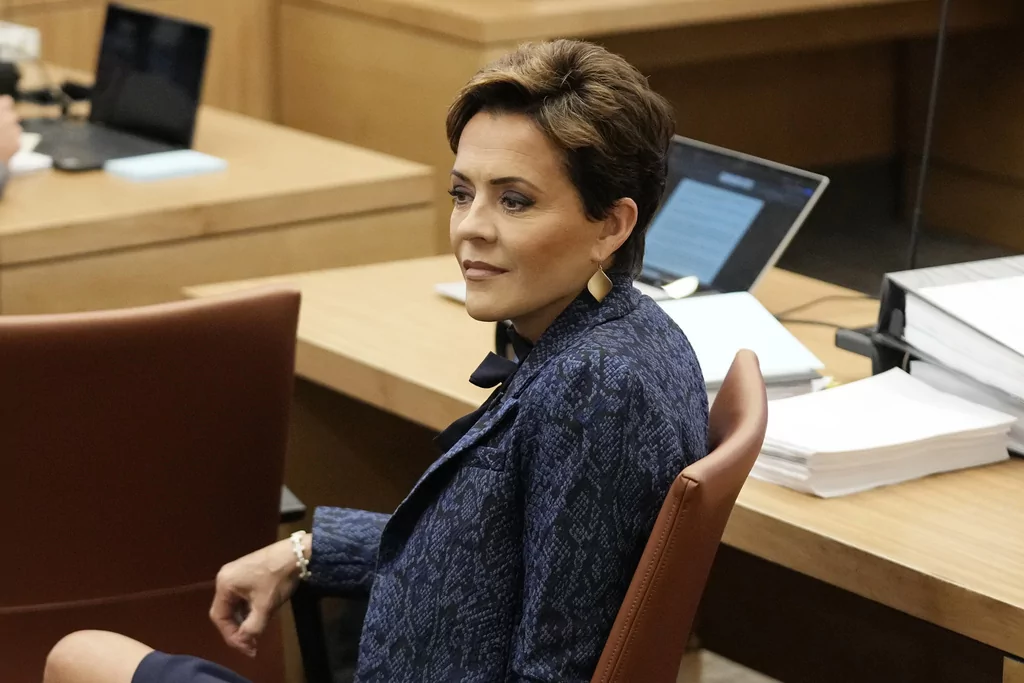 Former Arizona Republican governor candidate Kari Lake sits in court at Maricopa County Superior Court during a voting records trial Thursday, Sept. 21, 2023, in Phoenix. (AP Photo/Ross D. Franklin, Pool)
Former Arizona Republican governor candidate Kari Lake sits in court at Maricopa County Superior Court during a voting records trial Thursday, Sept. 21, 2023, in Phoenix. (AP Photo/Ross D. Franklin, Pool)
The secretary of state will transmit Certificates of Ascertainment and Certificates of Vote for president to the U.S. Archivist, the U.S. Senate, and the Chief Judge of the U.S. District Court for the District of Arizona.
Automatic recounts occur if the margin is 0.5% or smaller, which changed in 2022 from 0.1%. Some local offices are not subject to the automatic recount thresholds. A candidate or member of the public may not request a recount.
The new threshold means the 2020 presidential results would have gone to a mandated recount, which, if it occurs this year, would likely delay certification.
Marson, the Arizona Republican strategist, downplayed the effect that recounts have in the state.
“It makes Republicans feel better,” he said. “Recounts don’t really change anything.”
Former Phoenix City Council member Yassamin Ansari won her August Democratic primary for Arizona’s 3rd Congressional District, currently held by Senate candidate Rep. Ruben Gallego (D-AZ), by 42 votes out of nearly 43,000 ballots. A recount diminished her lead by just three votes to cement a 39-ballot victory.
8. Poll Observers
Only certain people are allowed to be within a 75-foot perimeter around polling locations. They include voters and accompanying children, election officials, credentialed political party observers, and Department of Justice observers.
That means individuals wanting to act as vigilante observers will be prohibited from doing so unless they are further than 75 feet from a voting center. Members of the media must also adhere to the perimeter. Those outside may not express threatening, harassing, or intimidating behavior.
Only one observer per political party is typically permitted at each location, according to the Arizona secretary of state. Credentialed observers are not allowed to obstruct poll workers or those voting, interact with voters, take videos or photos, disobey other posted rules, or wear clothing with political messages.
“That’s part of the election integrity. You want multiple people making sure everything’s going right in a vote center,” Borunda of Maricopa County said. “The way we staff it, I think we achieve that.”
The Trump campaign and the Republican National Committee are pledging to dispatch a whopping 100,000 poll watchers composed of volunteers and attorneys to voting locations across battleground states as part of its “Election Integrity Program.”
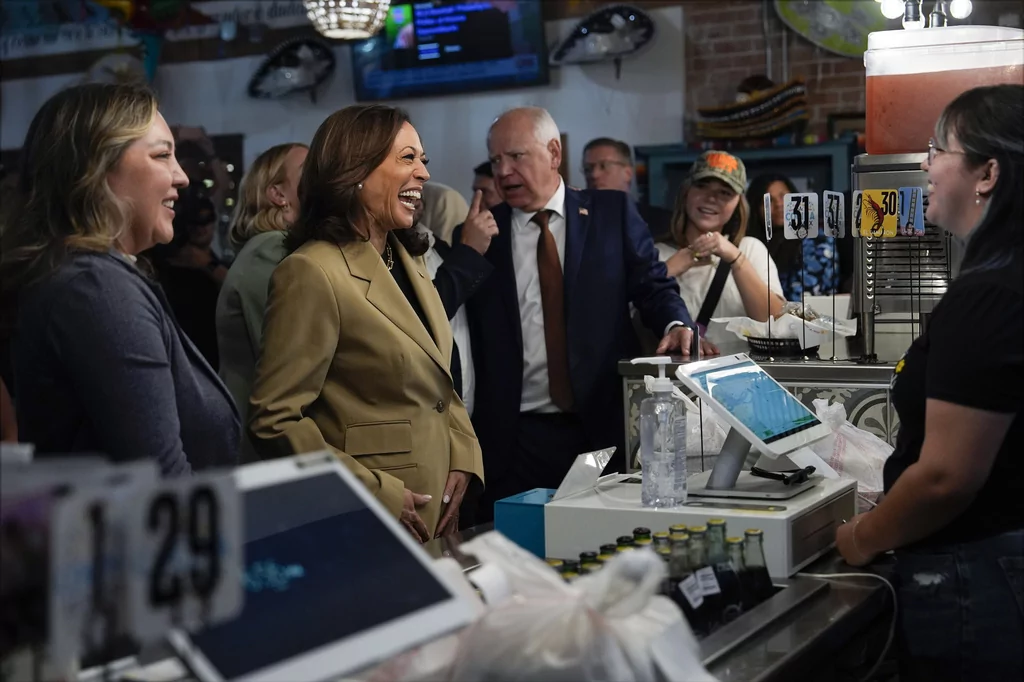 Democratic presidential nominee Vice President Kamala Harris and running mate Minnesota Gov. Tim Walz visit Cocina Adamex Friday, Aug. 9, 2024, in Phoenix. (AP Photo/Julia Nikhinson)
Democratic presidential nominee Vice President Kamala Harris and running mate Minnesota Gov. Tim Walz visit Cocina Adamex Friday, Aug. 9, 2024, in Phoenix. (AP Photo/Julia Nikhinson)
However, these rules, set by Secretary of State Adrian Fontes, might not ultimately be in place on Election Day in a surprising turn of events. A Maricopa County Superior Court judge has ruled Fontes may not enforce his rules governing what people can and cannot do in and around polling places over First Amendment violations.
Prior to the ruling, which was the result of a legal challenge brought by the Free Enterprise Club, the Conservative Political Action Committee notified state elections officials that they intended to perform “observation” of ballot drop boxes to prevent voter fraud. CPAC Chairman Matt Schlapp said drop box observers would adhere to the 75-foot rule but that pictures or videos may need to be taken “to document any activity that could be viewed as legally questionable.”
CLICK HERE TO READ MORE FROM THE WASHINGTON EXAMINER
Arizona Democratic state Sens. Priya Sundareshan and Anna Hernandez described Republicans’ poll-watching plans as “voter intimidation” that were “strengthened” by the court ruling.
“This is nothing short of a coordinated campaign by radical right-wing organizations to normalize and expand efforts to scare voters from dropping off their early ballots on or before Election Day and make it more difficult to vote,” the Democrats said in a joint statement.
Samantha-Jo Roth contributed to this report.
Source link : http://www.bing.com/news/apiclick.aspx?ref=FexRss&aid=&tid=66d75a38e68248c1836067a2efc83f6a&url=https%3A%2F%2Fwww.washingtonexaminer.com%2Fnews%2Fcampaigns%2F3139938%2Fbatteground-ballots-arizona-election-voting-laws%2F&c=6701297639975706849&mkt=en-us
Author :
Publish date : 2024-09-03 07:18:00
Copyright for syndicated content belongs to the linked Source.

